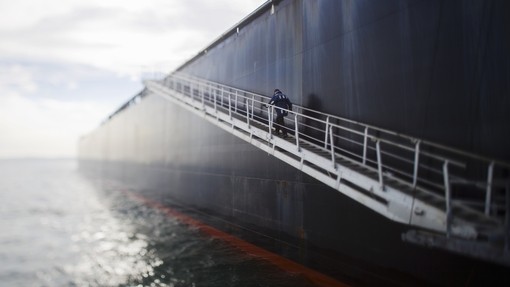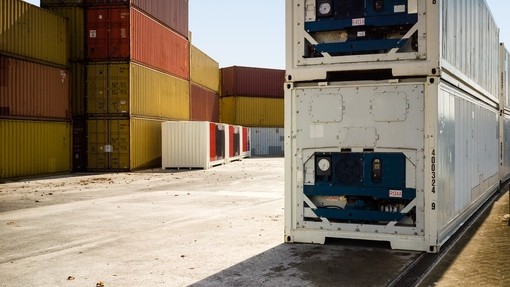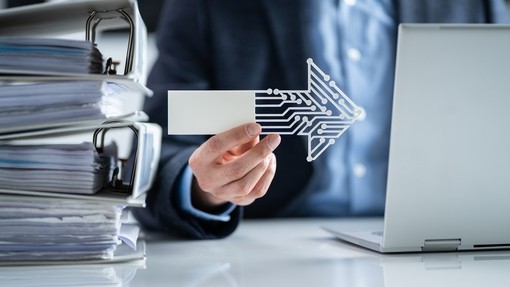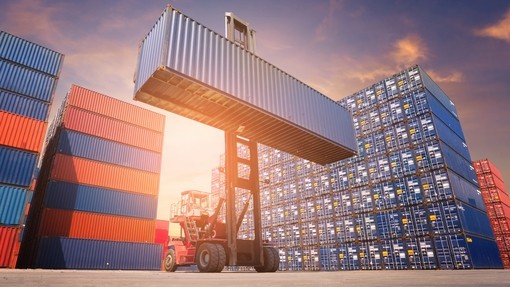Transporting lithium-ion batteries: identifying and addressing the risks
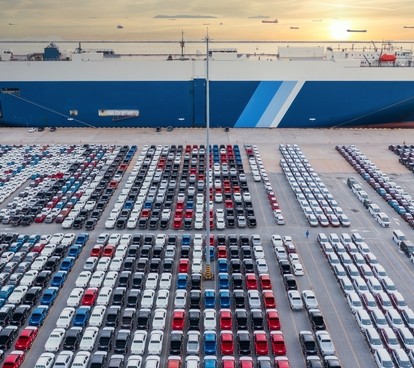
Transporting lithium-ion batteries: identifying and addressing the risks
The international transportation industry has been looking carefully at the hazards inherent in transporting lithium-ion (Li-ion) batteries and goods powered by them. As has been highlighted recently in the industry press, while Li-ion battery fires are not a common occurrence, their consequences can be devastating.
It has been reported by a major insurer in its 2023 Safety and Shipping Review that battery fires on vessels remain one of the biggest safety concerns facing the international maritime industry. Li-ion batteries are said to be the cause of, or to have contributed to, a number of serious fires on board vessels in recent years.
Also in March 2023, the European Maritime Safety Agency (EMSA) published its CARGOSAFE study, which assesses the risks associated with fires on container ships and evaluates prevention, detection, firefighting, and containment measures. The study indicated that the main cargo types identified as responsible for a large share of cargo fire accidents included Li-ion batteries.
These reports follow on from a ‘Lithium Batteries White Paper’ published in November 2022, which highlighted a number of industry concerns and recommended regulatory changes, as well as proposing various practical measures for fire prevention and emergency response.
Given ongoing global decarbonisation initiatives, there has been a resulting increase in the use of electric vehicles (EVs), electric scooters and bikes and electronic equipment and consumer goods generally. It has been predicted that the market for EVs will grow by 30% between 2020 and 2030. Therefore, the risk of such fires becoming more frequent during the carriage and transportation of Li-ion batteries or goods powered by them is a real one unless it is addressed head on.
Stakeholders within the supply chain – including shipowners, carriers, freight forwarders, terminal and port operators, insurers and manufacturers – have been working together to manage the risks and reduce future exposure. Regulators are also considering whether existing regulations are inadequate and need to be revised.
In this article, we consider some issues arising and recent industry response.
Thermal runway
In simple terms, where a battery cell is damaged or faulty and overheats, it can result in a chemical reaction which itself generates more heat and the cell may gradually become so hot as a result of this chain reaction that toxic gases are produced. This can result in the battery becoming damaged, exploding, melting or catching fire. Such fires have incredibly high temperatures, can be self-perpetuating and very hard to extinguish.
CINS Network Guidelines
In March 2023, the Cargo Incident Notification System (CINS) and Network, in conjunction with other industry stakeholders, produced the ‘Lithium-ion batteries in containers guidelines’.
The Guidelines state that the common causes of fires and explosions involving Li-ion batteries have been due to internal manufacturing defects, physical damage or substandard quality and internal electrical failure (overcharge, over-discharge or short circuit). Other fires have been related to packaging failures and mis-declaration of cargo or non-declaration of Li-ion batteries.
It is recognised that Li-ion battery technology is evolving rapidly and, therefore, risk control procedures for the safe transportation of Li-ion batteries and related goods may need to develop and evolve over time. However, the Guidelines recommend that the supply chain should improve its incident record relating to the transport of Li-ion batteries. Manufacturers and supply chain stakeholders are also advised to implement a number of measures, including:
- Developing performance-based standards for Li-ion batteries;
- Developing ventilation and cooling or extinguishing systems to manage thermal runway;
- Updating industry standards, transport regulations and codes to address thermal runway risks;
- Developing education, training and emergency response procedures;
- Introducing Li-ion battery cargo screening, inspections and vanning surveys; and
- Introducing transparency related to factory audit and supply chain know your customer procedures.
Further CINS guidelines are expected in due course, dealing with compliance, risk assessment and emergency response, as well as training and awareness.
It is worth noting that Maersk, one of the world’s largest container shipping companies, has issued a best practice for transporting EVs. It has also seized the market opportunity of developing specialised Li-ion battery and EV storage warehouses to mitigate the risks involved with storage. The storage facilities have advanced thermal monitoring systems that track battery temperatures, detect abnormalities and ultimately prevent fires from breaking out.
The Regulations
The relevant regulations are the IMO’s International Maritime Dangerous Goods Code (IMDG) for transport by sea, International Air Transport Association (IATA) for transport by air and the Agreement for the Carriage of Dangerous Goods by Road (ADR) for transport by road. All three sets of regulations are based on the UN Model Regulations on the Transport of Dangerous Goods, adapted where appropriate for specific circumstances for each mode. Different categories of batteries and battery-powered vehicles or equipment will have their own specific UN number. For rail transport, there is the International Carriage of Dangerous Goods by Rail (RID).
The regulations cover requirements for the construction and testing of batteries, classification and declaration of shipments, packaging and stowage.
Furthermore, the International Code for the Safe Carriage of Packaged Hazardous Articles (ICHCA) provides guidelines for safely transporting dangerous goods, including Li-ion batteries, by sea.
Batteries and devices that contain batteries are classified as dangerous goods and have to comply with specific packaging and shipping regulations. All Li-ion batteries, equipment powered by Li-ion batteries and Li-ion battery-powered vehicles are ‘Class 9’ under the UN Model Regulations and IMDG Code, which covers miscellaneous dangerous substances and articles. This is the least hazardous ranking and means they can be stowed above and below deck and with other dangerous goods.
Nonetheless, as dangerous goods, they must be declared and shipped as such under the applicable UN number. Additionally, the vessel will have a Document of Compliance (DOC) for dangerous cargo, which indicates where the batteries can be safely stowed on board. Furthermore, all batteries must be tested and must meet the specified criteria.
However, there are Special Provisions (SPs) complementing the UN classification. Smaller lithium batteries are considered to be less hazardous, even though they continue to be dangerous goods. Under SP 188, if they satisfy certain requirements, they can be transported under specific conditions and will not have to comply with other ADR/IMDG Code provisions, for example the carrier will not have to be specifically notified of the container’s contents.
In 2021, the UK Maritime and Coastguard Agency (MCA) published a marine guidance note (MGN 653(M)) on ‘Electric Vehicles onboard Passenger RoRo Ferries’. This notes that the IMO has no requirements specific to the carriage of EVs on passenger or cargo RoRo ships. In fact, SP 961 excludes EVs carried on Ro-Ros and car carriers from the requirements that apply to battery-powered vehicles or equipment. Consequently, carriers do not generally have a list of all EVs on board, or their respective locations.
Regulatory changes?
There have been calls to reclassify Li-ion batteries as class 4.3 under the IMDG Code. This covers flammable solids which, when in contact with water, emit flammable gases. They would then be subject to much more stringent segregation requirements.
The White Paper recommends revoking the SP 961 exemption for EVs so that carriers can plan stowage locations and the monitoring of EVs during the voyage in greater detail, with a view to developing early detection, evacuation and/or firefighting procedures.
It also proposes a separate UN number for Li-ion powered EVs so that they could be subject to specific requirements for declaration and documentation (for example, state of charge, type of battery, battery chemistry and capacity).
There are currently no rules governing the state of charge, except for transport by air. IATA Regulations specify a maximum of 30% and it has been proposed that this should be extended to transport by sea and other forms of transport. This would help in reducing the risk of thermal runway during transportation.
The IMO is reportedly considering whether any changes need to be made to the IMDG Code but nothing specific has yet been confirmed.
Legal considerations
Under Article III Rule 1 of the Hague/Hague-Visby Rules, the carrier has a due diligence obligation to make the vessel seaworthy and to properly man, equip and supply the vessel. Article III Rule 2 sets out the carrier’s obligation to take reasonable care of the cargo, subject to certain exceptions set out in Article IV, including the fire exception in Article IV Rule 2b. Article IV rule 6 provides for the shipper’s indemnity in the case of dangerous goods, where they have been shipped without the carrier’s knowledge or consent.
Dangerous cargo can, of itself, make a vessel unseaworthy, as can faulty systems and inadequately trained crew. Whether the carrier acted as a prudent owner is not always straightforward because it may not be clear before or at the commencement of the voyage that a battery forming part of the cargo was defective and the carrier will not usually check on the contents of a container itself. Instead, it will rely on the documentation provided by the shipper. A hidden danger is nonetheless relevant.
The shipper has a strict liability for shipping dangerous goods without the carrier’s knowledge, but the indemnity will not be engaged where the loss has been caused by the carrier’s failure to exercise due diligence.
Ultimately, a shipper should protect itself by providing all the relevant documentation and making the relevant declarations. The carrier may not then be able to rely on lack of knowledge/consent, but it can stow the goods appropriately and take any required precautionary measures.
Contractual terms
Transactions within the logistics industry are usually conducted on the basis of standard terms and conditions that will incorporate provisions dealing with the transport and/or storage of dangerous goods.
The customer will normally be under a strict duty to notify a forwarder, carrier or warehouse keeper if goods are dangerous and to provide all the documentation and information required so that the goods can be stored or transported safely. However, a forwarder must still show reasonable skill and care in handling and transporting the goods. As the use of Li-ion becomes increasingly more common, forwarders, carriers and warehousing facilities should familiarise themselves with the potential risks associated with them.
Contractual clauses, particularly those dealing with dangerous goods and any exclusion/limitation of liability clauses, should also be reviewed to ensure that they provide sufficient protection and allocate risk as required. Where a forwarder has been negligent in its handling of the goods, it may not be able to rely on a standard exclusion/limitation of liability clause.
Mitigating risk
Damaged or defective Li-ion batteries are at greater risk from short-circuiting and while ideally they should not be shipped, there are likely to be an increasing number of used and reconditioned Li-ion batteries in the future, including those in second-hand EVs. Some carriers might refuse to carry them at all, but this could potentially encourage mis-declaration of cargo and may not be commercially viable in the long run.
Similarly, some carriers might refuse to allow batteries to be charged on board due to safety concerns, but they will come under commercial pressure to do so.
It has also been reported that manufacturers would like to see more powerful Li-ion batteries qualifying under SP 188. Potentially, technological developments might impact on the current classification because smaller batteries are increasingly more powerful. However, at an industry conference in March 2023, ‘Lithium-ion batteries in the logistics supply chain,’ it was stressed that manufacturers’ ambitions to develop more powerful, lighter and diverse battery cells should not be allowed to override safety concerns for their transportation. The importance of bringing manufacturers of EVs and the batteries that power them into the debate could not be over-emphasised.
In the meantime, participants in the supply chain should ensure that they do adequate due diligence on their counterparties and the cargo/goods in question so that they can satisfy themselves that the cargo has been prepared and declared correctly. Once batteries enter the intermodal supply chain, particularly if they have been shipped under SP 188, they are likely not to be checked to see if they are compliant.
Therefore, it remains crucial to keep up-to-date on legal and technological developments, comply with industry guidance and establish internal processes for minimising the risks.

